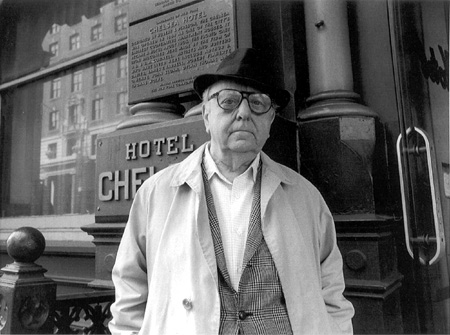VIRGIL THOMSON, American composer and music critic was born (d. 1989); Thompson was from Kansas City, Missouri and was instrumental in the development of the “American Sound” in classical music so often associated with the patriotic compositions of Aaron Copland. He displayed an extraordinary intelligence at an early age and attended Harvard University. His tours of Europe with the Harvard Glee Club helped nurture his desire to return there. Upon his return to Paris, he eventually studied with Nadia Boulanger and became a fixture of “Paris in the twenties.”
His most important friend from this period was Gertrude Stein, who was an artistic collaborator and mentor to him. Following the publication of his book The State of Music he established himself in New York City, as a peer of Aaron Copland and was also a music critic for the New York Herald-Tribune from 1940 through 1954. His writings on music and his reviews of performances in particular, are noted for their wit and their independent judgments. His definition of music was famously “that which musicians do,” and his views on music are radical in their insistence on reducing the rarefied aesthetics of music to market activity. He even went so far as to claim that the style a piece was written in could be most effectively understood as a consequence of its income source.
He won the Pulitzer Prize for Music in 1949 with his film score for Louisiana Story. Additionally, Thomson was famous for his revival of the truly rare technique of composing “musical portraits” of living subjects, often spending hours in a room with them before rushing off to finish the piece on his own. Many subjects report feeling that the pieces did capture something unique about their identities in spite of the fact that nearly all of the portraits were absent any clearly representational content.
Later in life, Thomson became a sort of mentor and father figure to a new generation of American tonal composers such as Ned Rorem, Paul Bowles and Leonard Bernstein, a circle united as much by their shared Gay sexuality as by their similar compositional sensibilities.
